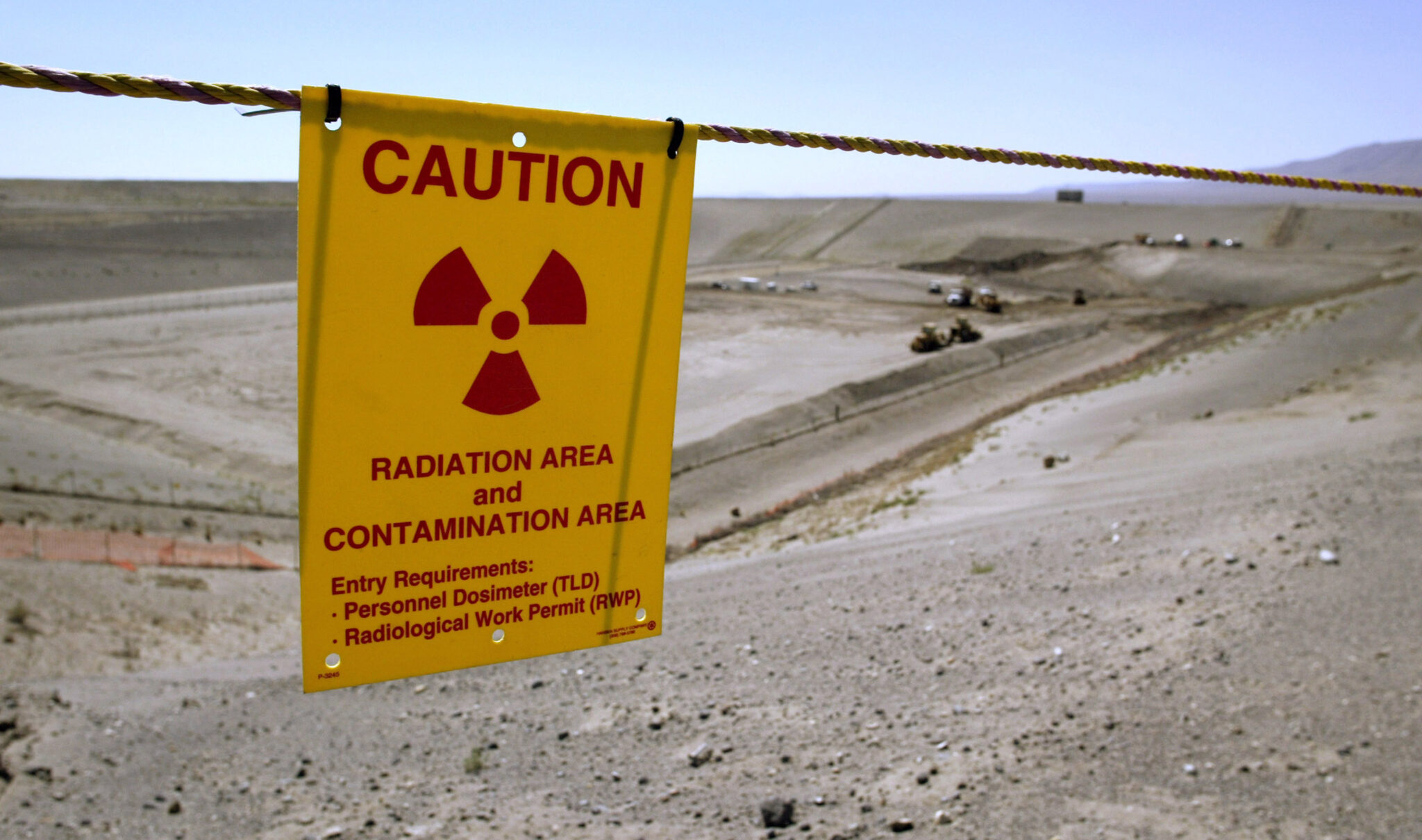Top Stories
Hanford Nuclear Site Begins Urgent Waste Glassification Process

UPDATE: The Hanford nuclear reservation in south-central Washington has officially begun converting its most dangerous radioactive waste into safe glass. This landmark glassification process commenced on Saturday evening, but was only confirmed by the U.S. Department of Energy (DOE) on Wednesday.
This development marks a significant milestone for the world’s largest radioactive waste treatment facility. Ray Geimer, the DOE’s Hanford manager, stated, “The plant’s successful startup represents a crucial achievement at this scale, demonstrating the ability to stabilize nuclear waste for safe, long-term disposal.”
Lawmakers from Washington’s congressional delegation are celebrating this advance. Senator Patty Murray remarked, “This is just the start and we’ve still got a ways to go before we’re anywhere near done, but today’s success is worth celebrating — let’s make glass!” Meanwhile, Senator Maria Cantwell hailed it as an “incredible technical and logistical accomplishment.”
The glassification process is currently set to handle an initial batch of 25,000 gallons of waste, which will be treated in two massive melters. This technology combines radioactive waste with glass flakes, heating the mixture to temperatures of 2,100 degrees to create a stable glass that will be stored in large cylinders to cool and solidify.
This initiative is crucial for addressing the legacy of waste generated by Hanford’s operations since its establishment in 1943 for plutonium production. Over the decades, this work resulted in the creation of billions of gallons of hazardous waste, with approximately 56 million gallons stored in 177 underground tanks, a third of which are known to leak.
Alarmingly, it is estimated that at least 1 million gallons of radioactive liquid have seeped into the ground and contaminated an aquifer located 200 feet below the site, eventually reaching the Columbia River, roughly seven miles away.
The original timeline for the treatment plant was set for 2009, but it has taken an additional 16 years to reach this point. Hanford plans to gradually ramp up operations over the next year until the facility reaches full capacity. This first plant aims to process 40-50% of the low-activity waste stored in the tanks, with plans for two additional glassification plants for high-level waste.
The overall budget for this long-overdue project has ballooned from an initial $4 billion in 2002 to an estimated $30 billion today, with the first plant alone costing over $9 billion.
Despite this progress, the current legal target is to complete the glassification of all tank wastes by 2052. However, DOE has indicated an internal expectation to push this deadline back to 2069, as noted in a recent report by the Government Accountability Office.
As this process unfolds, the community and environmental advocates are closely monitoring developments. The successful implementation of this glassification process is not only a technical achievement but a crucial step toward ensuring the safety and health of local residents and ecosystems.
Authorities will continue to update the public on the progress of this vital project. For now, the focus remains on the immediate success of glassification and the future implications for waste management at Hanford.
-

 Business1 week ago
Business1 week agoIconic Sand Dollar Social Club Listed for $3 Million in Folly Beach
-

 Politics1 week ago
Politics1 week agoAfghan Refugee Detained by ICE After Asylum Hearing in New York
-

 Health1 week ago
Health1 week agoPeptilogics Secures $78 Million to Combat Prosthetic Joint Infections
-

 Science1 week ago
Science1 week agoResearchers Achieve Fastest Genome Sequencing in Under Four Hours
-

 Lifestyle1 week ago
Lifestyle1 week agoJump for Good: San Clemente Pier Fundraiser Allows Legal Leaps
-

 Health1 week ago
Health1 week agoResearcher Uncovers Zika Virus Pathway to Placenta Using Nanotubes
-

 World1 week ago
World1 week agoUS Passport Ranks Drop Out of Top 10 for First Time Ever
-

 Business1 week ago
Business1 week agoSan Jose High-Rise Faces Foreclosure Over $182.5 Million Loan
-

 Entertainment1 week ago
Entertainment1 week agoJennifer Lopez Addresses A-Rod Split in Candid Interview
-

 Science1 week ago
Science1 week agoMars Observed: Detailed Imaging Reveals Dust Avalanche Dynamics
-

 Top Stories7 days ago
Top Stories7 days agoChicago Symphony Orchestra Dazzles with Berlioz Under Mäkelä
-

 World1 week ago
World1 week agoRegional Pilots’ Salaries Surge to Six Figures in 2025









